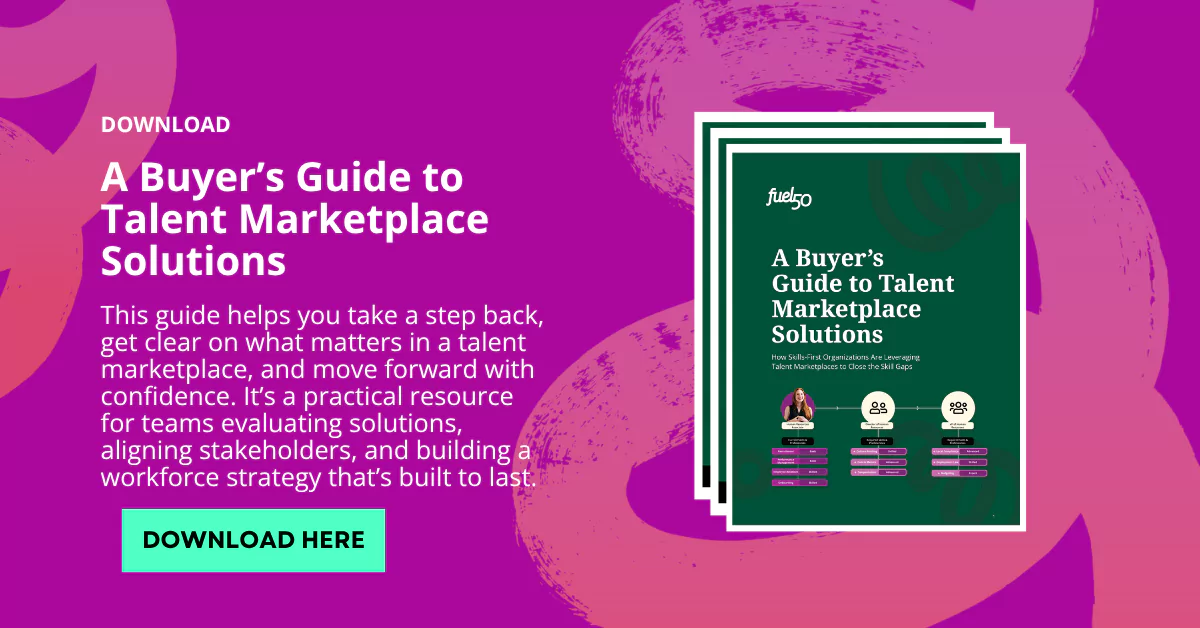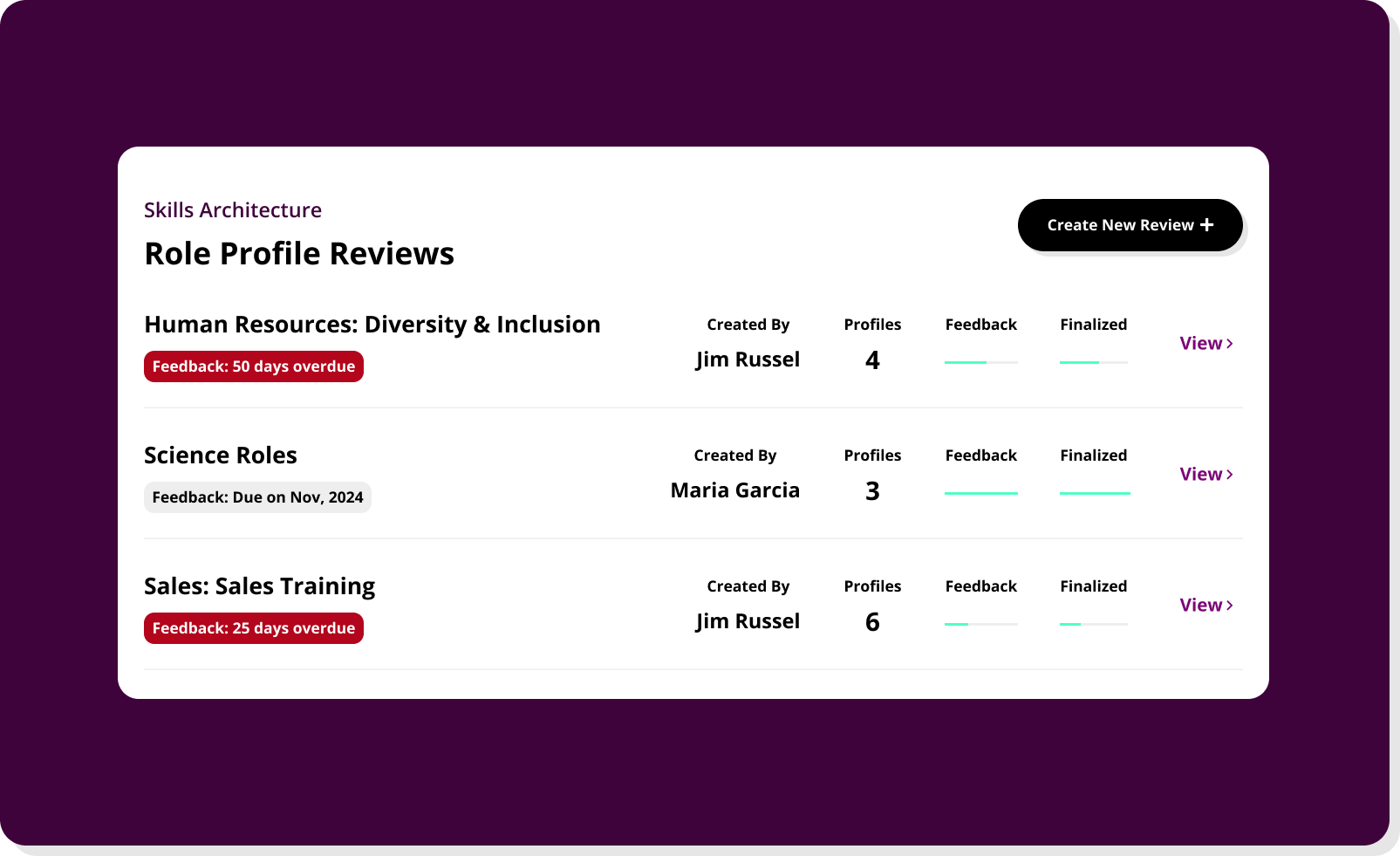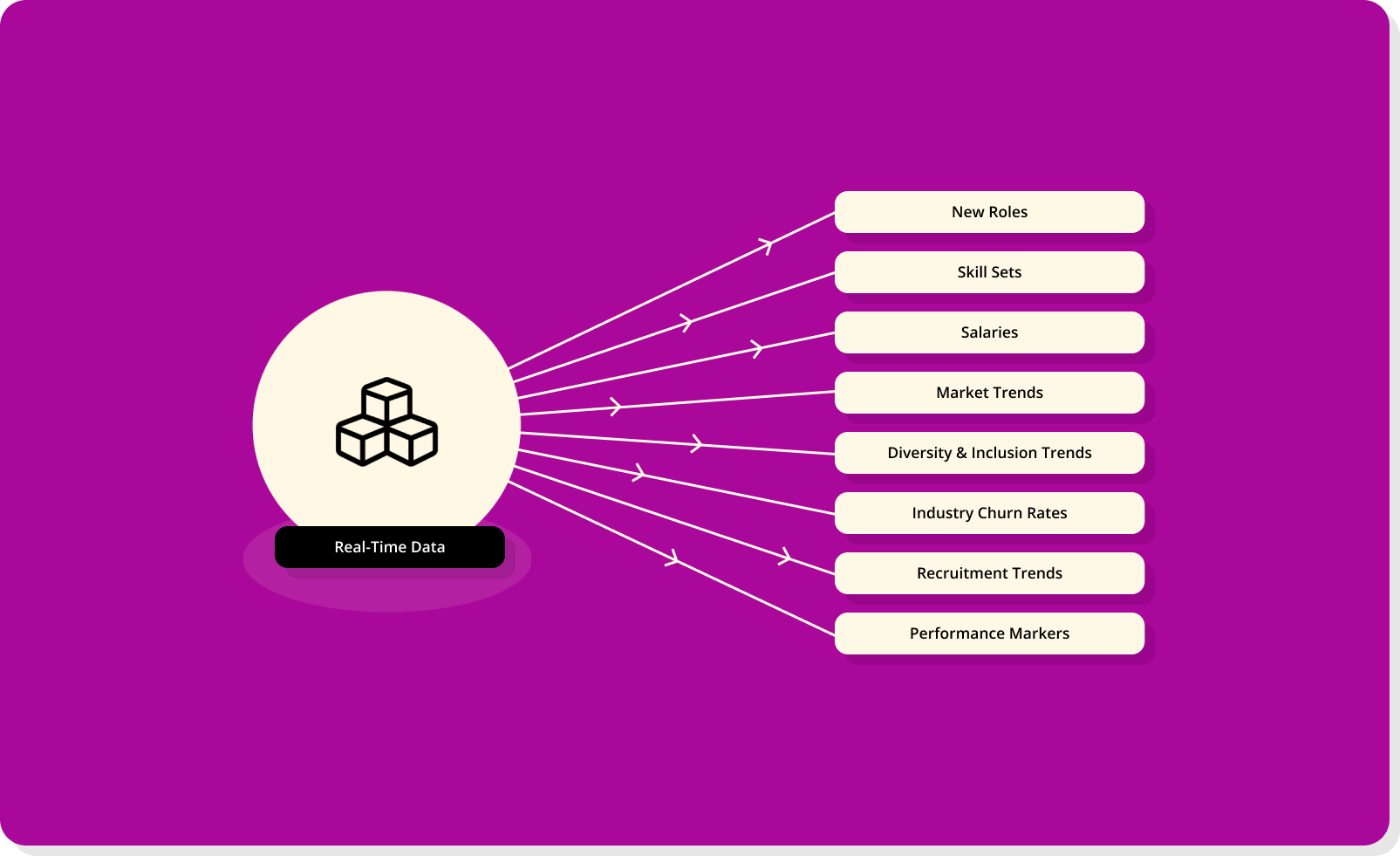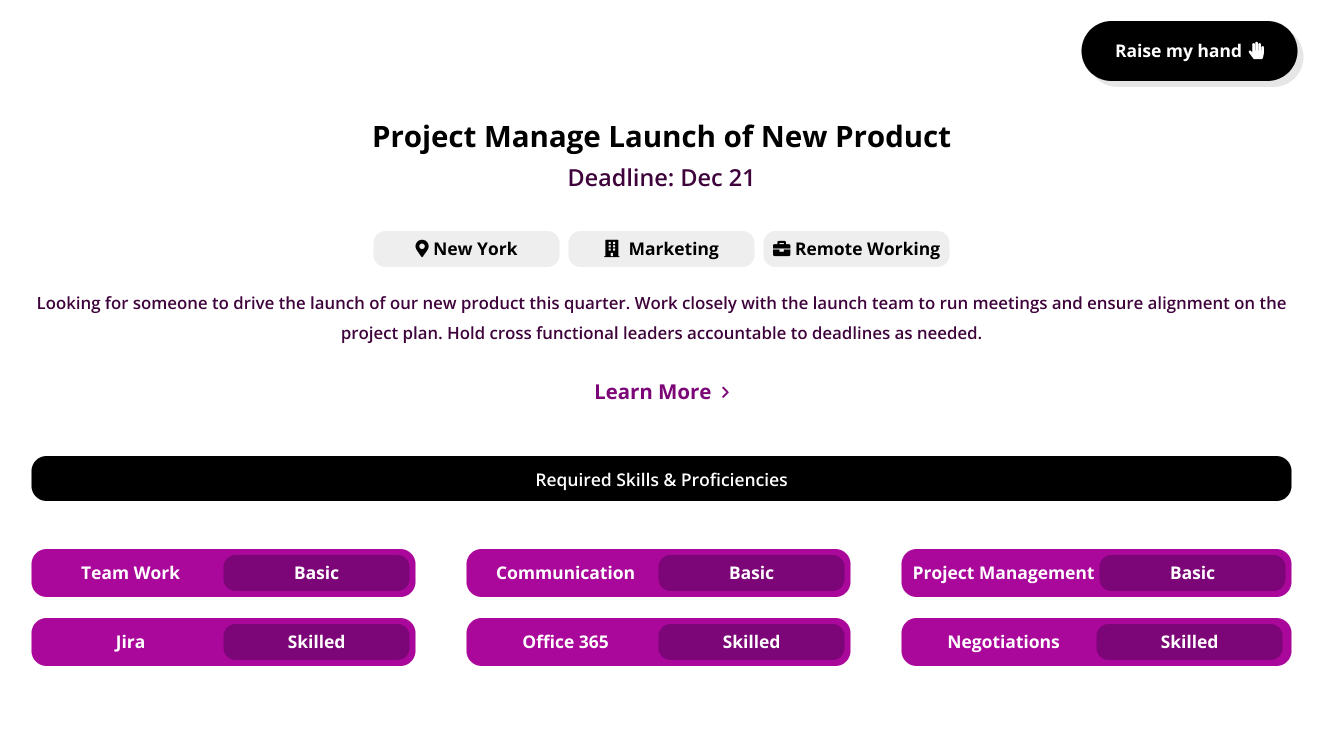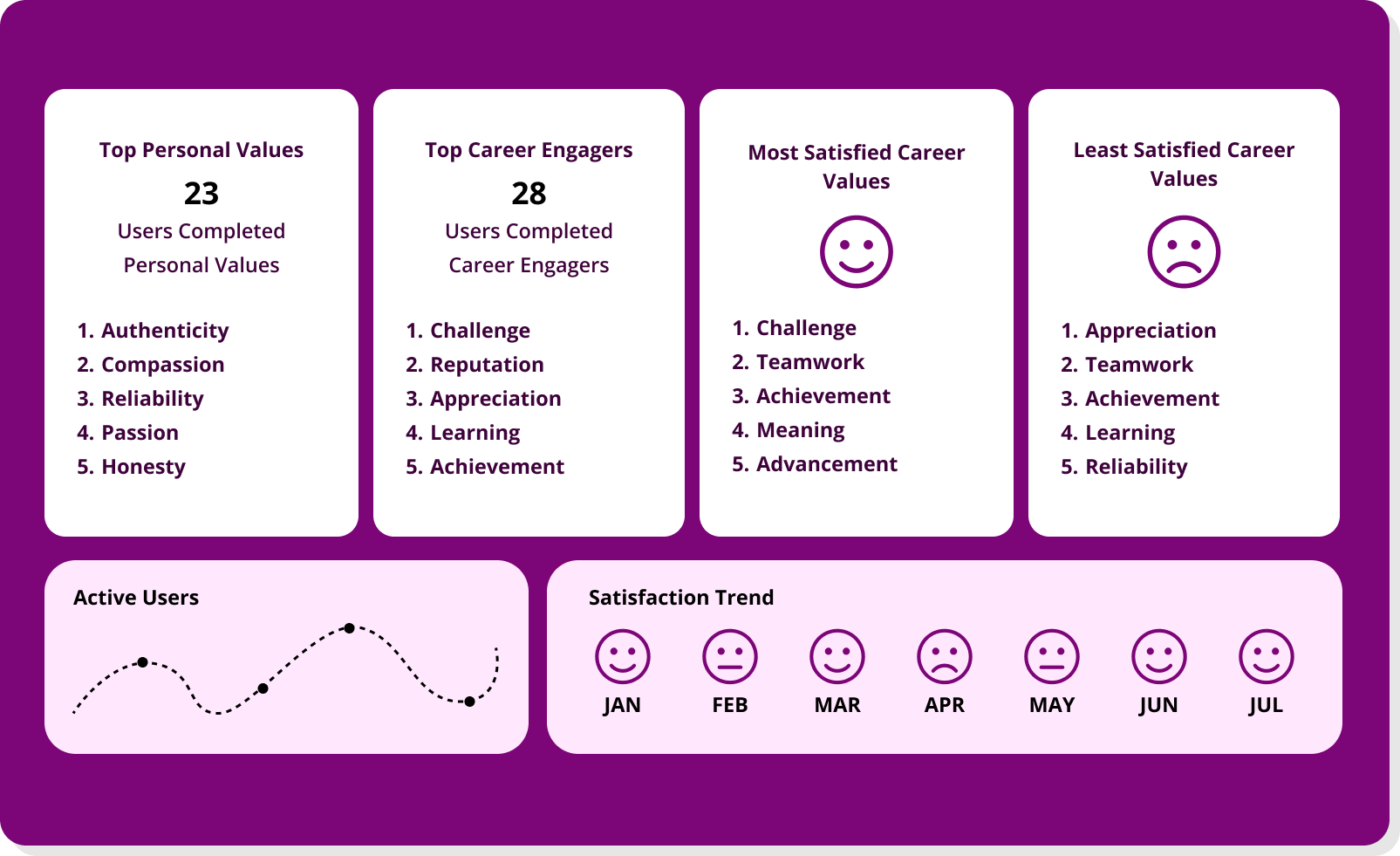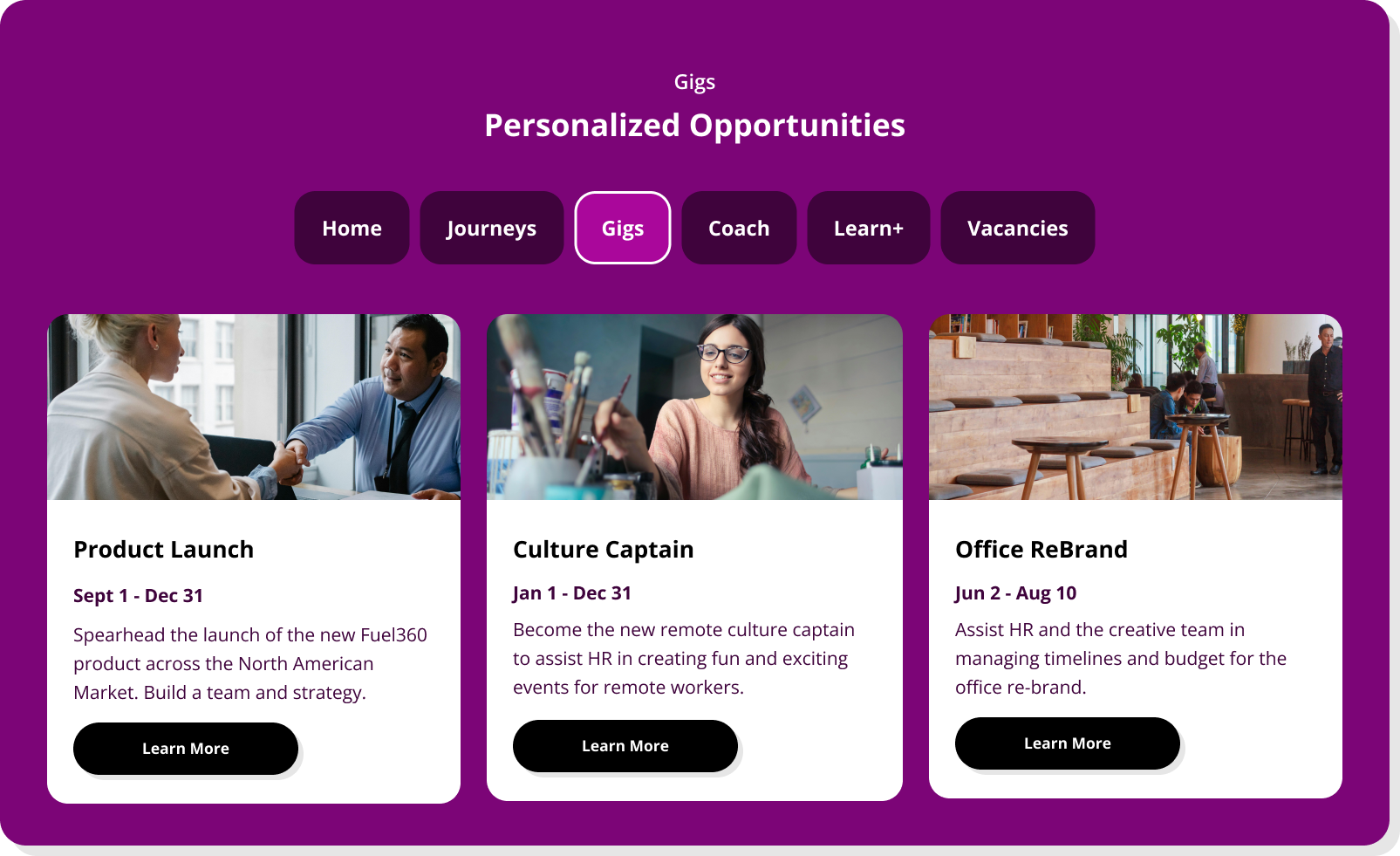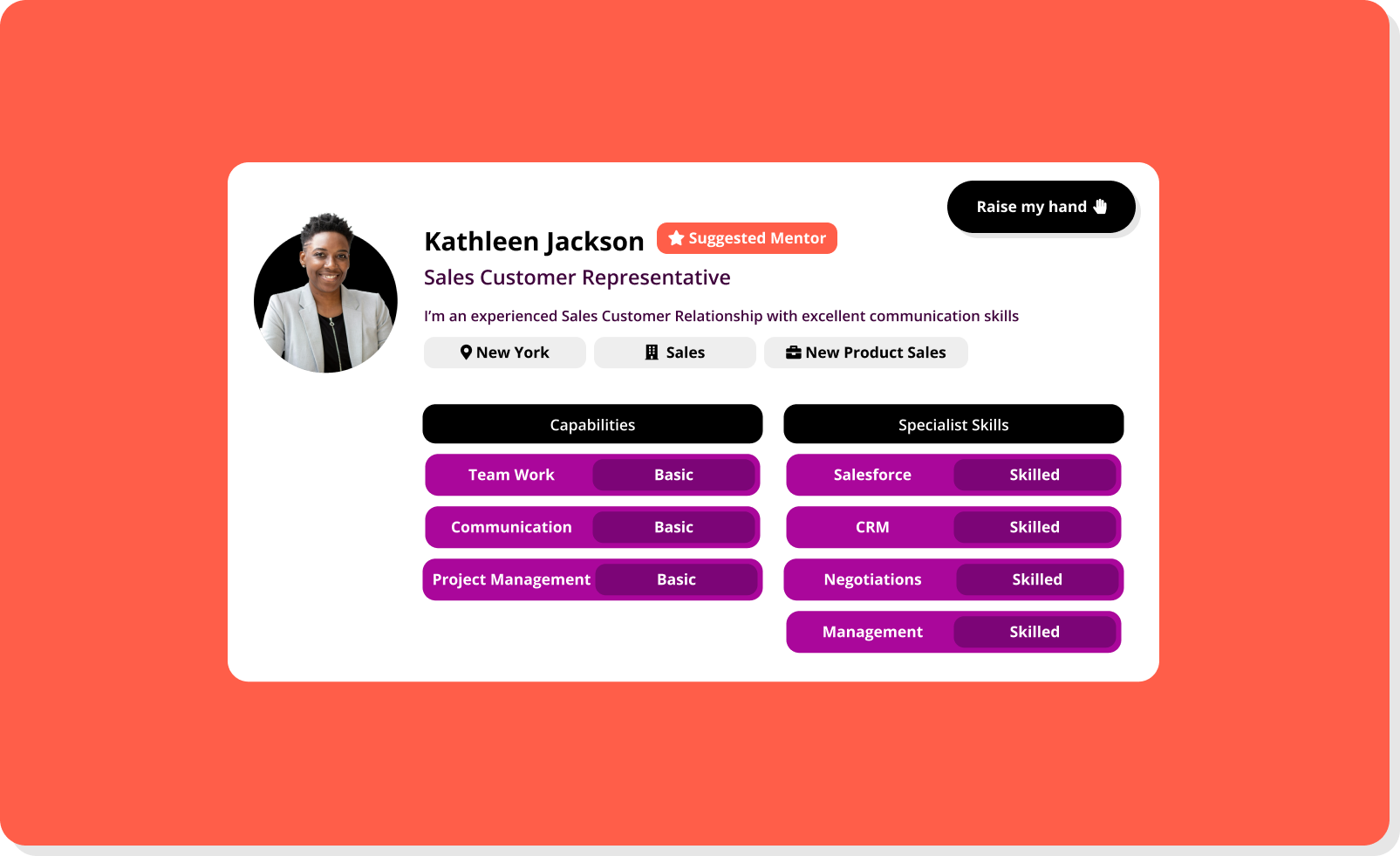Across industries, there’s growing consensus that the future of talent is skills-based. Organizations are rethinking roles, reimagining mobility, and investing heavily in upskilling and internal growth. However, while HR leaders are building the strategy, it’s often managers who are expected to execute it—guiding development, deploying talent, and enabling performance on the ground.
The problem? Most managers are being asked to lead in this new, skills-based world without the visibility or tools to do it well. Without a clear view of their team’s capabilities, career goals, and development readiness, managers are left to rely on instinct. This is creating friction everywhere: in talent planning, in performance conversations, and in the day-to-day moments that shape employee experience.
This is where Fuel50 makes the difference.
In the sections below, we’ll explore how Fuel50 equips managers to lead with skill intelligence—helping them move from reactive decisions to proactive talent strategies.
Most managers are leading with guesswork
Managers are at the center of how work gets done—but many are being asked to lead in ways they haven’t been equipped for. They’re expected to coach employees, guide careers, allocate talent, and grow high-performing teams—all while navigating daily demands and shifting priorities.
Yet in most organizations, the data and tools available to support these expectations fall short. Managers are forced to make people decisions based on limited visibility—relying on tenure, familiarity, or intuition instead of clear insights into what their teams can actually do. According to Gallup, six in ten managers admit they are not yet at an expert level when it comes to developing their employees and helping with career paths.
It’s also a missed opportunity at the organizational level. When managers can’t see the full picture of their team’s capabilities, skills go underutilized. High-potential employees are overlooked for stretch opportunities. Projects are staffed based on convenience rather than fit. Over time, these small misalignments start to impact productivity, morale, and retention.
To be clear, this isn’t to blame managers. It’s about recognizing that they need more support—specifically, access to better data and tools that help them lead with confidence. With the right insights, managers can make more informed decisions, have more meaningful career conversations, and become stronger advocates for their people.
When that shift happens—from gut instinct to skills-based leadership—it’s not just individual employees who benefit. Teams become more agile, talent is deployed more effectively, and organizations are better equipped to grow from within.
What happens when managers actually know what skills their people have
If managers are struggling to lead because they don’t have insight into their team’s capabilities, the question becomes: what kind of insight do they actually need?
This is where skills come in as a critical layer of intelligence that unlocks better leadership.
When skills are visible, managers no longer have to rely on tenure, title, or vague impressions to make people decisions. They can see who’s ready for a stretch assignment, who has adjacent skills for an open role, who’s underutilized, and where targeted development would have the most impact.
That shift—from gut instinct to skill-informed leadership—is what makes visibility so essential. Skills provide the missing context behind performance. They make career conversations more concrete and help identify potential where it might otherwise be overlooked. Lastly, they give managers a shared language to talk about growth, readiness, and opportunity in a way that’s objective and actionable.
This is how high-performing teams are being built today. In organizations that have made skills visible across their workforce, managers are having more meaningful 1:1s: Internal mobility is accelerating, learning investments are becoming more targeted, and managers are leading with a new kind of confidence—because they finally have the insight to back their decisions.
How Fuel50 gives managers the tools to lead with skill intelligence
With Fuel50, skill intelligence becomes a daily enabler of better decisions, stronger coaching, and faster, fairer talent mobility.
Below, we break down how Fuel50 supports key managerial functions—not in theory, but in real-world execution.
Understand your team’s capabilities with real-time skill profiles
The foundation of effective people leadership is knowing what your team can do. Not just based on what’s listed in HR systems, but what they’re actually capable of, interested in, and ready for. Fuel50 solves this with dynamic skill profiles, powered by competency models, that give managers a real-time view into every employee’s strengths, gaps, and growth trajectory.
Each profile reflects a combination of validated organizational data, peer feedback, and individual input. Unlike static resumes or subjective performance notes, these profiles evolve with the employee—offering a living snapshot of skills across technical, behavioral, and leadership dimensions.
Managers can easily compare team skillsets, understand where capabilities overlap or diverge, and make informed decisions around who to develop, promote, or deploy. The result is a much clearer picture—not just of what’s working, but what’s possible.
Identify internal talent and mobility opportunities without guesswork
Fuel50’s talent marketplace gives managers the ability to look beyond their immediate team and tap into the full potential of the organization. Whether you’re trying to fill a project role, backfill a vacancy, or offer someone a stretch assignment, Fuel50 surfaces talent based on precise skills matching—not assumptions, tenure, or visibility bias.
Using AI-powered matching, managers can identify employees who are a strong fit for open opportunities, based on a holistic alignment of skills, readiness, and growth interests. These insights are available at the point of need—no digging, no back-channeling, and no delays.
This also reduces overreliance on external hiring. Instead of assuming you need to go to market, managers can quickly see who inside the business already meets the criteria—and is ready to grow. That’s faster for the business, more engaging for employees, and smarter for budgets.
Support career growth with skills-backed pathing, gigs, and coaching
One of the hardest parts of being a manager is knowing how to support someone’s career in a way that’s relevant and realistic.
Fuel50 simplifies this by connecting each employee’s skills profile to a personalized set of career pathways, mentoring options, and project-based gigs.
These are mapped to the employee’s current capabilities, desired direction, and role possibilities within the organization. Managers can walk into a 1:1 and say, “Here’s where you are, here’s where you could go, and here’s what we can do together to get you there.”
Because Fuel50 includes a built-in marketplace for mentoring and coaching, managers can go beyond what they can personally provide—matching employees with internal experts who can accelerate development in specific skill areas. This democratizes career growth across the organization and empowers managers to lead without having to be the sole source of expertise.
Lead more impactful 1:1s with data-driven coaching and development plans
Performance conversations become far more productive when they’re grounded in real data. Fuel50 equips managers with skill-based development plans that highlight not only where improvement is needed, but how to achieve it—through targeted learning, peer support, and real work experience.
Rather than giving vague advice like “keep growing your leadership skills,” managers can say, “You’re tracking well in stakeholder management, but we’ve identified a gap in strategic thinking—let’s focus your next quarter on developing that.” The platform even suggests learning resources and projects to build those skills, taking the guesswork out of development planning.
These development plans evolve over time, with input from both manager and employee. That shared ownership creates more accountability, and ultimately, more progress.
Make smarter resourcing decisions with workforce capacity insights
At any given moment, managers need to answer a tough question: who’s available, who’s ready, and who’s right for this work? Fuel50’s workforce capacity insights make that question easier to answer—without relying on email chains or secondhand updates.
The platform gives managers a real-time view of individual and team-level capacity, surfacing who’s overutilized, underleveraged, or under consideration for a shift. That means when projects ramp up or priorities change, managers can reallocate talent based on actual skills and availability—not assumptions or proximity.
This capability also supports longer-term planning. Managers can forecast talent needs against evolving demands and work with HR to close gaps through upskilling, lateral moves, or succession strategies.
Across industries, managers using Fuel50 report stronger engagement, clearer career conversations, and better alignment between people and work. At UCI, for example, Fuel50 helped reduce attrition by more than 50% by empowering managers with skill insights that led to more internal placements. At KeyBank, development plan engagement surged, and leaders gained a clearer view of hidden talent they could tap into.


